- Region
- Águilas
- Alhama de Murcia
- Jumilla
- Lorca
- Los Alcázares
- Mazarrón
- San Javier
-
ALL AREAS & TOWNS
- AREAS
- SOUTH WEST
- MAR MENOR
- MURCIA CITY & CENTRAL
- NORTH & NORTH WEST
- TOWNS
- Abanilla
- Abarán
- Aguilas
- Alamillo
- Alcantarilla
- Aledo
- Alhama de Murcia
- Archena
- Balsicas
- Blanca
- Bolnuevo
- Bullas
- Cañadas del Romero
- Cabo de Palos
- Calasparra
- Camping Bolnuevo
- Campo De Ricote
- Camposol
- Canada De La Lena
- Caravaca de la Cruz
- Cartagena
- Cehegin
- Ceuti
- Cieza
- Condado de Alhama
- Corvera
- Costa Cálida
- Cuevas De Almanzora
- Cuevas de Reyllo
- El Carmoli
- El Mojon
- El Molino (Puerto Lumbreras)
- El Pareton / Cantareros
- El Raso
- El Valle Golf Resort
- Fortuna
- Fuente Alamo
- Hacienda del Alamo Golf Resort
- Hacienda Riquelme Golf Resort
- Isla Plana
- Islas Menores & Mar de Cristal
- Jumilla
- La Azohia
- La Charca
- La Manga Club
- La Manga del Mar Menor
- La Pinilla
- La Puebla
- La Torre
- La Torre Golf Resort
- La Unión
- Las Palas
- Las Ramblas
- Las Ramblas Golf
- Las Torres de Cotillas
- Leiva
- Librilla
- Lo Pagan
- Lo Santiago
- Lorca
- Lorquí
- Los Alcázares
- Los Balcones
- Los Belones
- Los Canovas
- Los Nietos
- Los Perez (Tallante)
- Los Urrutias
- Los Ventorrillos
- Mar De Cristal
- Mar Menor
- Mar Menor Golf Resort
- Mazarrón
- Mazarrón Country Club
- Molina de Segura
- Moratalla
- Mula
- Murcia City
- Murcia Property
- Pareton
- Peraleja Golf Resort
- Perin
- Pilar de la Horadada
- Pinar de Campoverde
- Pinoso
- Playa Honda
- Playa Honda / Playa Paraíso
- Pliego
- Portmán
- Pozo Estrecho
- Puerto de Mazarrón
- Puerto Lumbreras
- Puntas De Calnegre
- Region of Murcia
- Ricote
- Roda Golf Resort
- Roldan
- Roldan and Lo Ferro
- San Javier
- San Pedro del Pinatar
- Santiago de la Ribera
- Sierra Espuña
- Sucina
- Tallante
- Terrazas de la Torre Golf Resort
- Torre Pacheco
- Totana
- What's On Weekly Bulletin
- Yecla


- EDITIONS:
 Spanish News Today
Spanish News Today
 Alicante Today
Alicante Today
 Andalucia Today
Andalucia Today
article_detail
Spanish News Today Editors Roundup Weekly Bulletin Jan 31
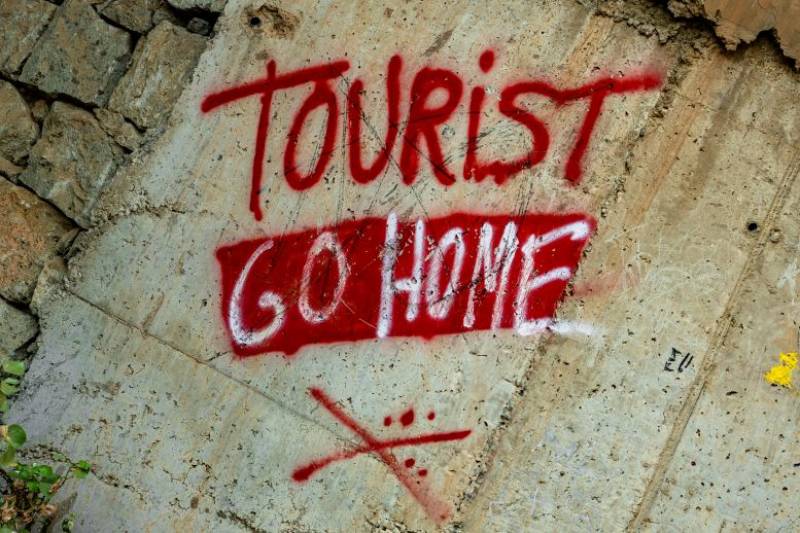
TOP STORIES: "Spain's 3-year tourist ban (and how it's not real)" & "Important changes to Spain's IRPF income tax returns for 2025"
We did it! It was a long, uphill struggle but we managed to reach the end of January. Our reward is a nice short February, followed by (hopefully) the return of the properly warm weather in March.
It’s also the Year of the Snake now, after the turn of the Lunar New Year earlier this week. It’s a year when we’re supposed to shed off our negativity like a snake does its skin, to be reborn, inviting prosperity and new possibilities into our lives.
So, on the subject of new beginnings, this week we’re talking about new updates to do with taxes that you should be aware of, a fresh and exciting service starting soon at Corvera Airport in Murcia, and the latest on the cost-of-living measures that the government failed to extend last week.
We’ve also got news about the tourism issue in Spain, specifically the ongoing love-hate relationship with it that has led Spain to bring in what the UK papers are dramatically calling a ‘three-year tourist ban’.
Spain vs. Tourists (or, The Battle that Never Really Existed)
Now this one has really got my hackles up. I promise I’ll start on my positivity kick straight after this rambling, ranting section is over.
You see, looking through the UK and Irish papers this week, you would be forgiven for thinking that Spain has finally had enough of tourists and decided to kick them all out for the next three years, economic interest and human rights violations be damned.
Does that make sense? Why do you think they would do that, even if they wanted to? Which they don’t…
And yet, that’s what some dramatic headlines in the non-Spanish press would have you believe. But in reality, all this talk of what they have mistermed a “three-year tourist ban” is just a case of media hype.
The sober truth, if anyone is still interest in that, is that Spain still very much wants you to come and spend your hard-earned money while on vacation here, but they’re also trying to tackle the growing problem of housing shortages caused by the explosion of short-term holiday rentals.
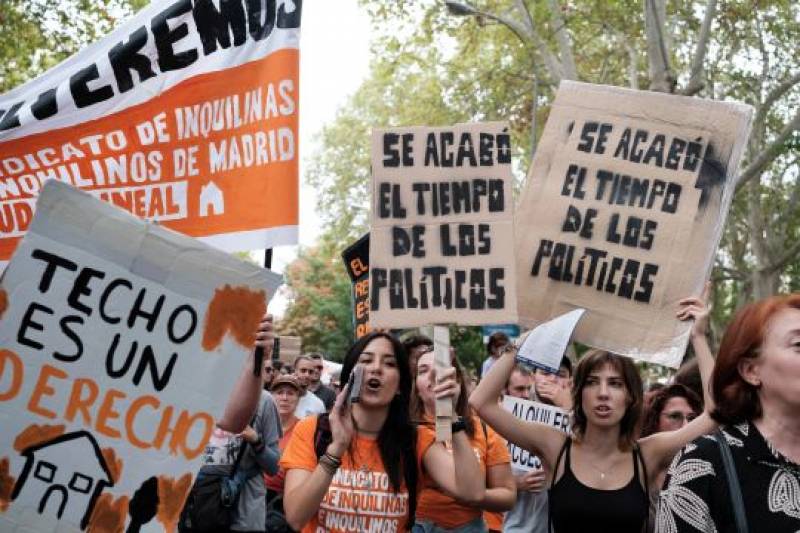
To be fair, the influx of tourists to Europe’s most popular sunny getaway spot has been both a blessing and a curse. On the one hand, Spain’s economy thrives on visitors who fill up hotels, restaurants and beach bars. On the other, entire neighbourhoods in places like Málaga, Mallorca, Gran Canaria and Barcelona have been turned into Airbnb villages, pushing rent prices through the roof and making life miserable for locals trying to find a place to live.
To address this, Spanish authorities are cracking down on the registration of new holiday lets in some areas. They’re not banning tourists, just trying to rein in the chaos a little. Málaga, for example, starting from January 13, put a temporary pause on any new registrations for ‘Viviendas de Uso Turístico’ (short-term lets) in certain neighbourhoods, but it is still possible to book a tourist apartment there with zero issues, not to mention check into a hotel if you prefer.
Another Andalucía-wide law coming into force later this year is the necessity for property owners who want to rent out their flats to tourists to get the blessing of at least three-fifths of their building’s residents.
This is supposed to mean there will be fewer surprise Airbnbs popping up overnight in what used to be quiet residential blocks. It’s not exactly an anti-tourism move, more of a “let’s stop entire apartment buildings turning into impromptu hotels” measure.
Local communities now have more power to say no to tourist rentals, and if owners ignore the rules, legal action could follow. A bold move, but not quite the anti-foreigner hysteria some tabloids have painted it as.
Of course, none of this has stopped certain media outlets from spinning wild tales, including the utterly bizarre suggestion that Spain is about to slap non-EU buyers with a 100% tax on property purchases, effectively immediately and retroactively applied to anyone who has ever bought a home in Spain. This is all puffed-up nonsense.
Firstly, this was never an actual law, just an off-the-cuff political proposal that was never going to fly (because, funnily enough, doubling the price of property overnight is not how taxes work). But that didn’t stop the rumour mill from going into overdrive, scaring Brits into thinking they’d be blocked from ever buying a holiday home in Spain again. Spoiler: you’re not.
Despite all the hand-wringing about tourism restrictions, Spain continues to pull in visitors like never before. Murcia, for example, has just had a record-breaking year for tourism, with over 1.4 million tourists in 2024, up 7% from the year before. And if the regional government has its way, 2025 will be even bigger, with plans to hit 2 million visitors and 6 million overnight stays.
Hotels in Murcia are thriving, with overnight stays increasing by nearly 8% and prices creeping up accordingly. The average hotel room now goes for about €71.64 a night, with revenues per room climbing by 8%. Even in December, when you’d expect things to slow down, occupancy was still at nearly 40%. In short, the tourism sector isn’t just alive, it’s booming!
So, is Spain banning tourists? Absolutely not. Is it making some adjustments to manage the chaos caused by the holiday rental boom? Yes. Should you panic and cancel your flights? No need. But maybe, just maybe, consider staying in a hotel instead of an Airbnb. Your Spanish neighbours will probably thank you for it.
Cost of living on the edge

Okay, so you remember how last week we made a big fuss over the fact that, due to fragile political alliances in the Spanish Congress, they didn’t pass the law that would continue the discounts on public transport, raise pensions payments for retired people and increase the minimum wage? Well, sorry folks it was basically all a storm in a teacup because they’ve now managed to come to an agreement to get most of those measures passed.
After a brief and somewhat chaotic pause, the transport subsidies are back. Thanks to some last-minute political hand-holding, the free Cercanías and Media Distancia train passes have been reinstated, along with the discounts on ALSA buses and metro services in large cities.
The government’s new decree, which essentially mirrors the old one, will keep these perks running until at least June 30, 2025, with further tweaks expected from July onward.
In an exciting twist, regional transport subsidies are now backed by national funding, meaning local governments no longer have to scramble for cash—provided they pitch in their fair share. From July, the free train bonanza will be replaced with a €20 monthly pass covering all Cercanías networks, and kids under 14 will ride for free. Meanwhile, public transport in the Canary and Balearic Islands remains completely free, making island life even sweeter.
As well as the transport discounts, the government has also managed to push through 29 other social measures, covering everything from pensions and housing to electricity subsidies and historical reparations.
One of the headline acts is a 6% boost to minimum pension payments, a 9% increase in non-contributory pensions, and an almost 10% rise for widows and dependent spouses.
Elsewhere, landlords will be getting a new public guarantee system that aims to cover them for any unpaid rent by their tenants, hopefully encouraging them to list their properties instead of hoarding them like rare artefacts. Vulnerable tenants can also breathe a little easier, as evictions will remain suspended for those without alternative housing. And if you’re worried about the lights going out, fear not: the government has ensured that no one at risk of social exclusion will face electricity, gas or water cuts.
Speaking of power, Spain is keeping a close eye on foreign investors with an extended anti-takeover shield. This measure allows the government to block certain foreign investments that could pose a risk to the economy or national security.
Additional aid has been granted to victims of the DANA floods in Valencia last October and those still dealing with the aftermath of the La Palma volcano eruption back in 2021. Millions of euros have been set aside to repair roads, restore infrastructure and help affected families rebuild their lives in these areas.
While 29 measures made the cut, several ambitious proposals have been unceremoniously dumped. For instance, electric car subsidies were scrapped, dashing hopes of generous government handouts for eco-friendly vehicle purchases. And despite previous promises, a plan to distribute 9.6 billion euros among regional governments for public services has been shelved for now.
From a political standpoint, it’s a warning for the government that they’re not always going to have carte blanche to pass whatever measures they want, with unquestioning backing from their coalition partners. But for your average Joe in Spain, these measures should help limit the impact of the rising cost of living just enough to allow us to scrape by above the breadline.
‘Incoming’ tax changes

A separate arm of the State – Hacienda, the taxman – has decided to shake things up a little for this year’s IRPF income tax campaign. Essentially, what residents here in Spain need to know is that they’ve moved up the date for filing your 2025 IRPF income tax return, which covers any income you’ve had in the calendar year 2024.
Apparently, the goal is to make the whole process “easier” and “more efficient” (because when has tax season ever been stressful, right?). The biggest change is that the window for being able to start the filing of the Spanish income tax is earlier than ever – you can now file your tax returns online starting from April 2, 2025.
Other little changes to the 2025 tax campaign include the Tax Agency deciding to keep a closer eye on our spending habits, purportedly in the interest of rooting out corruption. Specifically, any transactions over €25,000 per year per card must now be reported.
There is good news for those juggling multiple jobs as the income threshold for multiple payers has been bumped up from €1,500 to €2,500, while the employment income deduction limit has been raised to €7,302, both of which measures should help some people avoid unnecessary tax returns.
Unemployed individuals are no longer exempt from filing their tax returns; even if you’re on unemployment benefits (paro), you’ll now have to submit a tax return as well.
Murcia
The big story on everyone’s lips in Murcia lately is the fact that the Region of Murcia International Airport is soon to get a new shuttle bus service, which if you’ve ever tried to get anywhere from Corvera without a car, you’ll know is nothing short of a miracle.
 The succinctly named ‘Airport Buses’ are swooping in from their success in Almería, where they’ve been ferrying people to and from the airport for over a decade, to bring their expertise to Murcia, where it’s sorely needed. Starting from May 2025, they’ll be offering routes connecting Murcia Airport to La Manga, Torrevieja and to San Juan de los Terreros.
The succinctly named ‘Airport Buses’ are swooping in from their success in Almería, where they’ve been ferrying people to and from the airport for over a decade, to bring their expertise to Murcia, where it’s sorely needed. Starting from May 2025, they’ll be offering routes connecting Murcia Airport to La Manga, Torrevieja and to San Juan de los Terreros.Prices will be starting at a budget-friendly €8.99, with discounts for groups and half-price tickets for kids. The service is timed to launch just as summer travellers prepare to arrive in droves to the airport, but there’s a chance they’ll even make it a year-round service.
Since it’s a new venture, they’re waiting to see how much demand and interest there is, so if you want more routes added, or more stops on one of the existing routes, your best bet is to contact the company Airport Buses directly and let them know what you want. They’re still four months away from opening and have already changed their La Manga route to include the Las Terrazas de la Torre resort because so many people asked for it.
At first they’ll be running shuttle buses to coincide with all UK and Ireland summer flight take-offs and landings, but if enough users want them to also run services for European or domestic Spanish flights, then they’ll probably be willing to accommodate that.
They’re also eyeing up Alicante Airport as a future expansion, so if we all want to see this service succeed, our best bet is to support it and use it as much as possible. You can already pre-book your summer airport transfers, if you fancy.
Speaking of the near-summer, Murcia almost broke its January heat record, with temperatures soaring to a ridiculous 28.1ºC this Monday in the capital. Not to be outdone, northern municipalities like Abanilla, Cieza and Mula all recorded temperatures well above 25ºC, but before anyone could get too comfortable sunbathing, winter decided to make an uninvited comeback.
By the next morning, the northwest of Murcia was blanketed in snow. 28ºC one day, 10cm of snowfall the next. The mountainous countryside areas of Cañada de la Cruz, Inazares and Los Odres in Moratalla all woke up to a winter wonderland, with authorities quickly advising that only experienced hikers should even think about venturing up into these remote mountains.
❄️La nevada se va intensificando con el paso de las horas. Espesores cercanos a los 10 cm en cotas superiores a 1400 msnm en interior de la Región de #Murcia.
— Suremet (@MeteoChatSE) January 28, 2025
📹 @Jdsarrion pic.twitter.com/XVeCo2R6uN
And just when Murcians thought they’d had enough surprises, they were told to brace themselves for yet another round of sonic booms. The Spanish Air Force is back at it, conducting training flights at Albacete Air Base between February 3 and 13.
The Tactical Leadership Programme (TLP) will involve supersonic jets zooming overhead between 3.30pm and 5.30pm, except for weekends (thankfully, those jet pilots respect the sanctity of a lazy Sunday!). If you hear what sounds like the apocalypse arriving early, it’s just military planes breaking the sound barrier. No need to panic.
Another kind of vehicle is causing consternation down on the ground as the fight against illegal caravan camping rages on. Despite a significant increase in official campervan parking areas, some even boasting luxurious additions like a swimming pool and beach bar, too many motorhome owners still prefer to wing it, setting up camp in unauthorised spots.
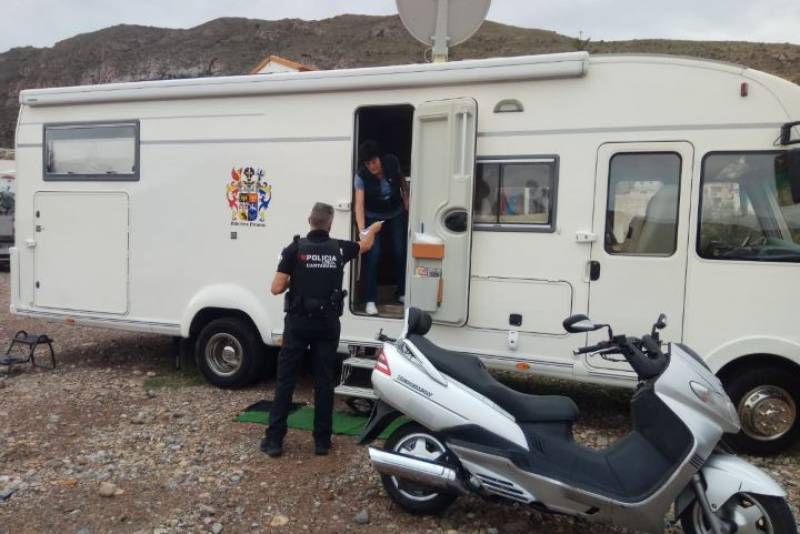 You’ll find them at shopping centre car parks, scenic coastal roads and even flood-prone areas, ignoring the fact that regulations explicitly forbid camping activities like sprawling out with tables, chairs and washing lines.
You’ll find them at shopping centre car parks, scenic coastal roads and even flood-prone areas, ignoring the fact that regulations explicitly forbid camping activities like sprawling out with tables, chairs and washing lines.Legally, it’s alright for caravans to park anywhere a car can, but camping is something else entirely, and even extending an awning outside of an official campsite is a big no-no. Doesn’t stop plenty of people doing it, though, and enforcement is tricky, especially on private land.
Meanwhile, official camper sites like the one in Molinos Marfagones are thriving, with a flood of motorhomes with Norwegian, Swedish and Danish number plates happily settling in for the winter. Which begs the question: is the problem a lack of legal spaces, in which case we need more campsites, or it just a refusal to use them and pay for them?
By the way, an update on the tragedy in the Cueva del Agua in Isla Plana when the poor 37-year-old woman named Lorena died while scuba diving there. Her boyfriend, Ismael, a diving instructor, is under investigation by police for possible reckless homicide. They are focusing on apparent contradictions in his testimony, whether Lorena had the right certification for such a hazardous dive, and whether her partner may have put her at unnecessary risk. While nothing has yet been officially concluded, experts are analysing her equipment and trying to determine exactly what went wrong.
Lastly, if you’re looking to invest in property in Spain, Murcia is apparently one of the most profitable places to do so. According to a report from Fotocasa, San Javier and Mazarrón are among the top places in the whole country for rental return on investment.
In terms of autonomous communities, Murcia and Catalonia are leading the pack, tied with an average annual profitability of 7.6%, comfortably beating the national average of 6.7%. Some areas are even hitting double-digit returns, with San Javier seeing a 10.9% yield and Mazarrón just behind at 10.6%.
This is excellent news for property investors, particularly given that rental demand is soaring while purchase prices, although increasing, aren’t keeping pace. For those looking to buy a property for their own use, to live in and enjoy a community around them that’s not made up of daytrippers, it’s not such good news, of course.
As for what’s on in Murcia this weekend, how about a pop-up market in Isla Plana on Saturday morning, with funds going towards a worthy local animal charity? Or maybe an evening of music from the movies in Yecla on Sunday evening? Or even a 200-year-old fiesta in Alhama de Murcia all weekend long?!
Don’t forget you can always check our EVENTS DIARY for more events and activities coming up soon in the Region of Murcia:
Spain
If you were in southeast Spain this week you may have missed this, but there were actually enormous storms tearing through the country from Monday to Thursday, leaving quite a bit of destruction in their wake. Sadly, a young man in Ourense lost his life in Storm Herminia, and more than 13,000 homes were left without power. Travel has also been a nightmare, with major disruptions to air, sea and rail services.
Galicia, up in the north, has taken the worst hit and remains on red alert for heavy rain, snow, fierce winds and dangerous waves. But it’s not just there; several other regions, including Andalucía, Aragon, Asturias, Castilla-La Mancha, Murcia, the Basque Country and the Valencian Community, were also under serious weather warnings on Monday and Tuesday.
#BorrascaHerminia
— S A N T I (@Santialonsovigo) January 27, 2025
Esta mañana de lunes 27 de enero en Cabo Estai. Vigo. pic.twitter.com/eF7oRCXvaN
Tragically, in Amoeiro (Ourense), a 51-year-old man lost control of his car early Monday morning, crashing into a wall. He was the only one in the vehicle and, according to the Guardia Civil, wasn’t wearing a seatbelt.
The storm also knocked out electricity for thousands in Galicia. By mid-morning, A Coruña was the worst affected, with 7,000 homes left in the dark, followed by Pontevedra (2,500), Ourense (2,200), and Lugo (1,400). While power was restored for most by the evening, nearly 4,000 homes were still without electricity for well over 24 hours.
Just as Spain starts to recover from the damage caused by Herminia, another storm is already rolling in: Storm Ivo. This marks the ninth high-impact storm of the 2024-2025 season, and it made landfall on Wednesday January 29, bringing near-hurricane-force winds to Galicia, Cantabria and the Basque Country.
According to Spain’s meteorological agency, Aemet, the country will remain under Ivo’s grip for about 48 hours before things start to settle down on Friday. That said, the Mediterranean coast might still see some wet weather over the weekend.
Once it all dries out, though, it could be time to think about your next trip. There’s something undeniably romantic about long train journeys. Maybe it’s the influence of classic films and novels, or the idea of travelling through breathtaking landscapes while meeting fascinating strangers. But for years, extended rail trips have been marketed mainly to younger travellers, making some people think that Interrailing is just for backpacking students.
Well, The Times begs to differ. According to the prestigious British newspaper, train travel is an adventure for everyone, no matter their age. In fact, they’ve highlighted three must-do train trips across Europe that offer stunning scenery, rich history and unforgettable experiences. And guess what? Spain made the list.
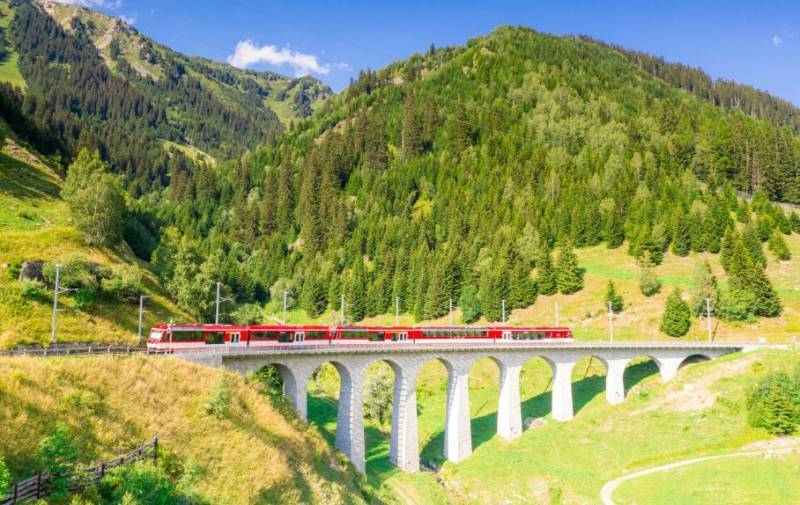
According to rail expert and journalist Andrew Eames, “two weeks will be enough with the flexibility of an Interrail pass and one of the following multi-national adventure itineraries.”
So, if you’re craving an epic journey, here is the incredible Spanish route he recommends. The journey begins in Paris, where travellers can explore the newly restored Notre Dame and soak up the post-Olympic excitement. From there, a high-speed train zips down to Lyon, followed by a stop in Avignon, before crossing into Spain.
Once in Madrid, there’s time to stroll down Gran Vía, visit the stunning Retiro Park and dive into the capital’s buzzing energy. The route then heads south to Málaga before wrapping up in Barcelona, a city that blends beachside relaxation with incredible architecture.
And for a picture-perfect ending, the coastal ride back to Paris offers a stunning farewell to an unforgettable trip. This two-week adventure will cost around €378 per traveller – not bad for a journey packed with history, culture and spectacular views.
If zipping around Spain by train sounds like your kind of travel, here’s even more reason to hop on board – Spain has some of the most punctual trains in Europe.
For many passengers, whether they’re commuting to work, catching a flight or heading to an important appointment, reliability is just as crucial as ticket price. And when it comes to on-time performance, Spanish rail travellers are in luck, as Renfe’s medium and long-distance trains have been ranked the fourth most punctual in all of Europe.
According to a December report from the NGO Transport & Environment, Renfe boasts an impressive 87% punctuality rate, with just 0.47% of services cancelled. In a study of 27 rail operators across Europe, Renfe was beaten only by Swiss operator SBB, Dutch company NS and Belgian SNCB. Meanwhile, German Deutsche Bahn and Portuguese CP lagged behind in this crucial category.
A McKinsey report found that for 49% of European travellers, ticket price is the number one deciding factor when choosing transport. Reliability comes in second, followed closely by things like onboard experience, special discounts and refund policies.
And here’s where Renfe truly shines. The Spanish railway company ranks highly in all key categories, with an 8.4 rating for overall customer experience, thanks to perks like Wi-Fi and power outlets on board. It also scored 8.8 for special offers.
Nobody likes delays, but if they happen, Renfe ensures passengers are well compensated. If a train is delayed between 60 and 90 minutes, passengers receive a 50% refund, and if the delay exceeds 90 minutes, they get 100% of their money back.
Despite growing competition in Spain’s rail industry, Renfe still carries more than 600 million passengers per year. With a solid track record of punctuality, great perks and fair policies, it’s clear why so many people continue to choose Spain’s national railway.
If hitting the road is more your speed, you might be interested to learn that Spain is considering a big shake-up in how people get their driver’s licences, one that takes inspiration from the American and UK systems, with the aim of making the process quicker and more affordable for aspiring drivers.
 These days, getting a licence in Spain isn’t exactly a speedy process. Fewer young people are rushing to hit the road the moment they turn 18, but for those eager to drive, the waiting times can be frustrating – in some regions, the backlog for taking the test stretches up to three months.
These days, getting a licence in Spain isn’t exactly a speedy process. Fewer young people are rushing to hit the road the moment they turn 18, but for those eager to drive, the waiting times can be frustrating – in some regions, the backlog for taking the test stretches up to three months.That’s why Spain’s traffic authorities are exploring a new approach: allowing learner drivers to practice with non-professional tutors like their parents, instead of relying solely on driving schools.
This idea could save new drivers both time and money while easing pressure on Spain’s busy driving schools.
But not everyone’s convinced. The National Confederation of Driving Schools (CNAE) strongly opposes the plan, arguing that trained instructors offer a structured, professional approach that parents simply can’t replicate. They worry that adopting an American-style system could lead to higher failure rates and compromise road safety.
Spain wouldn’t be the first country in Europe to introduce this kind of system, though. In fact, countries like France, the UK and Sweden already allow learner drivers to practice with non-professional tutors, but under strict conditions.
The US, on the other hand, has much more relaxed rules, with most states allowing parents to take the lead in training new drivers without additional requirements.
At the moment, this proposal is still in its early stages, and there’s no confirmed date for when, or even if, Spain will officially adopt this American-style approach. But if it moves forward, it could mean big changes for future drivers, making the road to getting a licence a little less bumpy.
Don’t forget, you can join our Driving in Spain Facebook group for all the latest motoring and travel news!
Alicante
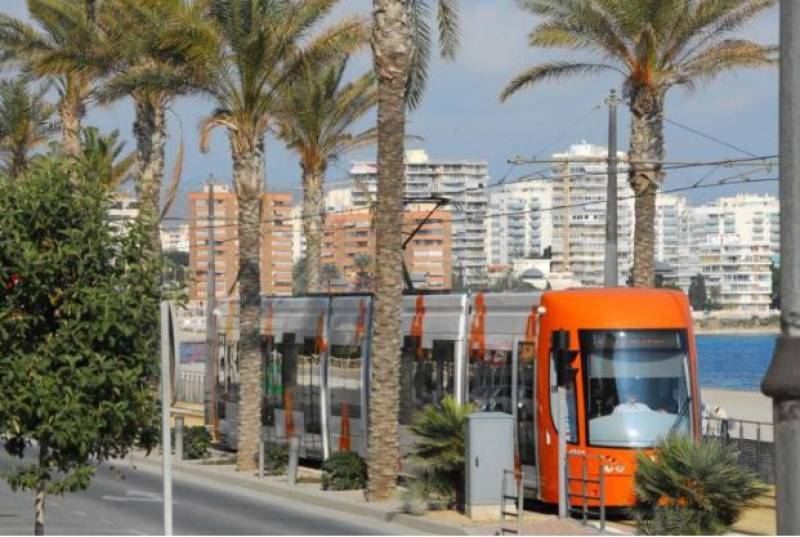 If you rely on Alicante’s TRAM to get around, brace yourself for some major disruptions. On Monday January 27, workers launched a strike that will last through February, cutting back services on lines 1, 2, 3, 4 and 5 for the next five weeks.
If you rely on Alicante’s TRAM to get around, brace yourself for some major disruptions. On Monday January 27, workers launched a strike that will last through February, cutting back services on lines 1, 2, 3, 4 and 5 for the next five weeks.Unions are frustrated that nine additional drivers, promised to help handle increased demand in 2025, haven’t been hired yet. With the expansion of Luceros station last year, TRAM services between Alicante and El Campello are set to double from every 30 minutes to every 15 minutes, and other lines are also expecting more frequent trains and double-decker cars.
While this should be great news for passengers, workers worry they’ll be overwhelmed if staff shortages aren’t addressed.
An agreement which included updated shifts, holiday schedules and new working conditions was supposed to take effect on January 8. However, a three-month delay by the Ministry of Finance in approving it has left these improvements in limbo. Frustrated by the hold-up, four unions (UGT, CC OO, SEMAF, and SF) called for a strike on January 10.
Starting this Monday and during the last week of January, the TRAM will reduce its frequency by 25% between 7am and 10am Monday to Friday, a schedule that will hit commuters hard. In fact, the unions expect waiting times of up to half an hour in general, while passengers taking the L3 line will have to wait a full hour between trams.
During the whole month of February, this industrial action will also include the hours from 6pm to 9pm. Although minimum services of 75% have been established, waiting times will still increase during peak hours.
Passengers are strongly advised to check the timetable on the official TRAM website to avoid any inconvenience.
 Animal lovers on the Costa Blanca are reeling after the sickening discovery that someone has been deliberately hiding deadly fishing hooks inside chunks of meat along a popular dog-walking path.
Animal lovers on the Costa Blanca are reeling after the sickening discovery that someone has been deliberately hiding deadly fishing hooks inside chunks of meat along a popular dog-walking path.The latest disturbing incident was reported in Pilar de la Horadada, where a beloved pet suffered serious injuries after picking up one of these barbaric traps.
“It was on the verge of swallowing it,” an officer explained, describing the narrow escape as the quick-thinking owner managed to snatch it from the dog's mouth just in time.
This cruel act came to light last Thursday January 23 on a well-frequented walkway in Pilar de la Horadada, near the Los Segundas neighbourhood. After the initial report, a police search of the area uncovered 12 more of these booby-trapped meat pieces, carefully hidden in the grass, waiting to be sniffed out by innocent pets.
The Local Police in Pilar have launched an investigation to track down the person responsible for this heinous crime, urging all pet owners to stay alert and report anything suspicious immediately.
Spain takes animal cruelty very seriously, and anyone caught setting these traps could face jail time. In 2023, a man in Jaén was sentenced to seven months in prison after he was caught red-handed leaving spiked meat in public areas.
After last year’s success, Orihuela’s Tourism Department is bringing back its free guided tours this February, offering a mix of history, art and nature across Orihuela City and Orihuela Costa.
In Orihuela city, highlights include a visit to the Museum of Sacred Art this Sunday and a tour of the murals of San Isidro on February 22, while on the Orihuela Costa, the nature routes include going to see the sunset at Campoamor, a walk along the cliffs of Cabo Roig and an almond blossom walk through Torremendo towards the end of the month.
Registration for these activities will open weekly. You can make reservations through the official website www.orihuelaturistica.es or via WhatsApp at 0034 673 836 385.
For other events and activities happening in the area, check out the What’s On page of Alicante Today or follow the Costa Blanca What’s On and Where to Go Facebook group
Andalucía
It’s official: mosquitoes in southern Spain have now upped their game. Just when we thought they couldn’t get any more irritating, scientists have discovered that some of them are carrying the Sindbis virus, a little-known infection that’s never been detected in the region before.
While it’s not exactly the apocalypse because symptoms are usually mild or nonexistent, it can cause fever, joint pain and skin irritation. Researchers trapped nearly 32,000 mosquitoes across Málaga, Sevilla, Huelva and Cádiz, only to find that a concerning 11.92% of the blood-suckers were infected with Sindbis, with Cádiz leading the way.
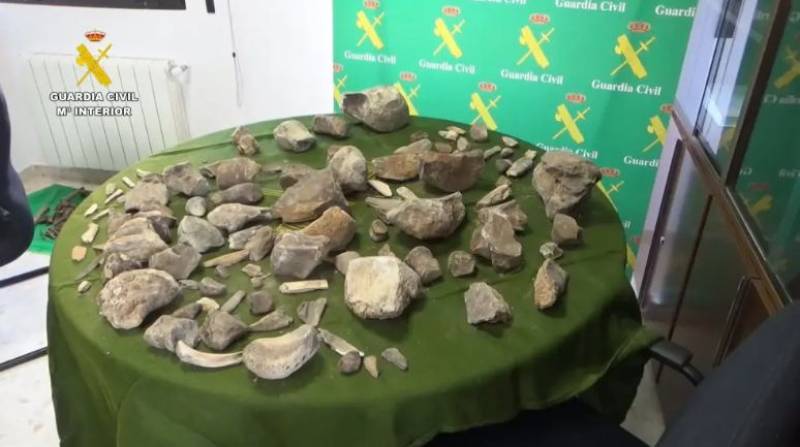 Speaking of animal discoveries, the Guardia Civil has recovered more than 100 mammoth remains that were illegally dug up from a peat bog near Granada. The fossils, dating back more than 12,000 years, were snatched by three individuals who apparently thought no one would notice them looting an Ice Age site of immense scientific value.
Speaking of animal discoveries, the Guardia Civil has recovered more than 100 mammoth remains that were illegally dug up from a peat bog near Granada. The fossils, dating back more than 12,000 years, were snatched by three individuals who apparently thought no one would notice them looting an Ice Age site of immense scientific value.The site, Laguna de Padul, is a goldmine of prehistoric remains, offering crucial insights into Europe’s past climate and fauna. Experts, including palaeontologists from Spain and Finland, confirmed the significance of the recovered bones. One of the suspects was found hoarding a particularly well-preserved mammoth molar at home.
The recovered fossils have now been safely housed in the Archaeological and Ethnological Museum of Granada, and the quarry has been temporarily shut down to stop further ‘accidental’ excavations.
There was another earthquake in Málaga this week, this time a gentle 2.8-magnitude tremor near Rincón de la Victoria. No damage and no injuries, just a bit of a wobble to keep people on their toes, or wobbling off their toes, or whatever.
Small quakes are pretty standard for the Axarquía region and nothing to worry about, but that’s not to say we should be forgetful of Málaga’s history of real whoppers, including a 6.8-magnitude disaster in 1680 that caused widespread devastation and even a tsunami.
Compared to that, Sunday’s tremor was barely worth mentioning. Still, a friendly reminder: if the ground does start shaking a little more vigorously, it’s best to take cover under something sturdy and resist the urge to dramatically flee the building like in a disaster movie.
Now, on to something truly earth-shattering: Robbie Williams is coming to Málaga. No, he’s not relocating, sorry. But he is headlining the christening of TUI Cruises’ newest mega-ship, Mein Schiff Relax, on April 9 of this year.
As ‘godfather’ of the ship (yes, that’s a real title in the cruise world), he’ll be performing an open-air concert at Málaga’s port. While the main audience will be passengers from three TUI cruise ships conveniently docked at the same time, around 2,000 tickets will be up for grabs for the general public. So you don’t have to be a cruise passenger to be able to see Robbie in concert, but it helps.
Ticket details will be revealed soon, so keep your eyes glued to the Port of Málaga’s social media if you fancy letting him entertain you. Rock, DJ!

You may have missed…
- Murcia photo of the month February 2025.
Here are the top two images of the month taken by the Los Alcázares Digital Camera Club (LADCC). - Discover Pearson Edexcel’s BTECs at Montessori British School in Spain.
Did you know that the Montessori School Murcia offers Pearson Edexcel BTEC programmes, which are internationally recognised vocational qualifications that prepare students for both academic and professional success? With a British curriculum that combines theory and practice, these programmes are ideal for students seeking a career-oriented education while maintaining strong academic foundations. - 8 romantic getaways in inland Murcia to celebrate Valentine’s Day!
Looking for a romantic weekend getaway for Valentine’s Day (or at any other time, for that matter)? Take a look at these suggestions from the Murcia tourist board and book now to get ahead of the crowds! - Pink cocaine lab busted at Irish mobster John Gilligan’s Orihuela Costa home.
Notorious Irish mobster John Gilligan, infamous for avoiding jail for the murder of organised crime investigative journalist Veronica Guerin back in 1996, is once again behind bars in Spain after a massive pink cocaine lab was dismantled inside his Orihuela Costa home. - Hollywood-style police chase from La Manga del Mar Menor to Almería.
Police patrols from San Javier, Cartagena, Mazarrón and Almería were given the run-around last night in a high-speed chase that started in La Manga del Mar Menor and spanned more than 100 miles before ending in the Almería town of Níjar.
And that’s it for another week! Thank you so much for reading up to here, and we’ll be back next week with plenty more for you.
See you then!
Contact Murcia Today: Editorial 000 000 000 /
Office 000 000 000
















